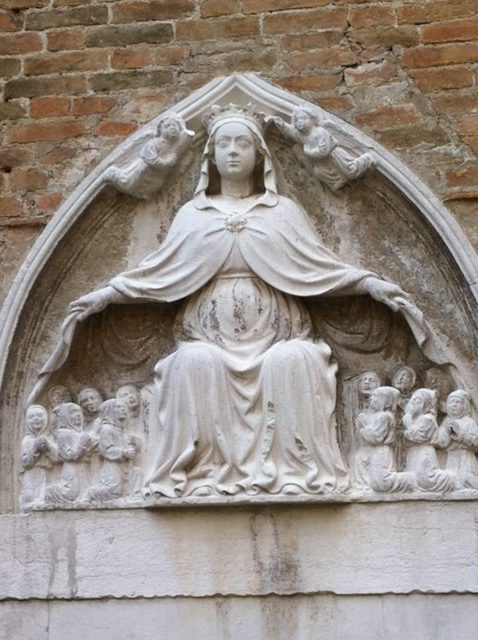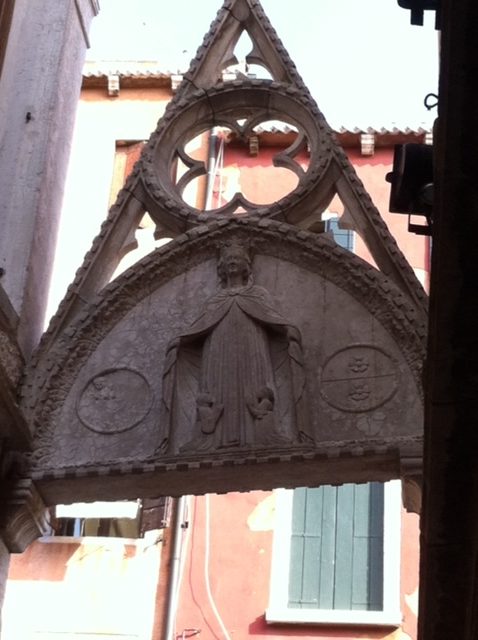
A medieval bas relief in Venice of the Mother of God protecting the faithful gathered under her veil.

An archway atop a small pedestrian bridge in Venice depicts the Mother of God protecting the faithful with her veil.
Western Christian depictions of the Protecting Veil of the Mother of God are often called “the Virgin of Mercy” and are sometimes associated with Christ’s remarks that He “longed to gather your children [the people of Jerusalem] together, as a hen gathers her chicks under her wings….” (Matthew 23:37) The Mother of God is shown with the faithful of many social ranks and classes gathered on their knees beneath her outstretched cloak. As she is the bridge that unites earth to heaven, having nurtured Christ in her womb and giving birth to God-made-man, her image is frequently seen near bridges. (The Latin word for “priest” (pontifex) comes from the Latin for bridge-builder because priests also act as bridges between Heaven and earth, divinity and humanity.
Probably the oldest Western version of this image is a small panel by Duccio of c. 1280, with three Franciscan friars under the cloak, in Siena. The Franciscans seem to have been devoted to the idea of the Virgin’s protecting veil and were important in spreading this form of iconography, which remains important in much of Latin America.
The image of Our Lady in Walsingham was not the Virgin of Mercy with her protecting veil but the shrine of Walsingham did celebrate the feast of Our Lady of Mercy as its patronal feast day. The popularity of the Walsingham shrine led many to call England “the dowry of the Virgin” and thus celebrate the Virgin of the Dowry on the same day as well.
The importance of the Virgin’s mercy and protection underlines the communal nature of Christianity and the dependence of the faithful on each other–as well as on particular saints–in times of adversity. In the gospel, it is rare that a sick person is healed because of their own faith; usually the sick are healed because their friends had the faith to approach Christ and ask that He heal the sick or cast out the demon(s) from the possessed. It is the faith of their friends which heals and saves those most in need.
